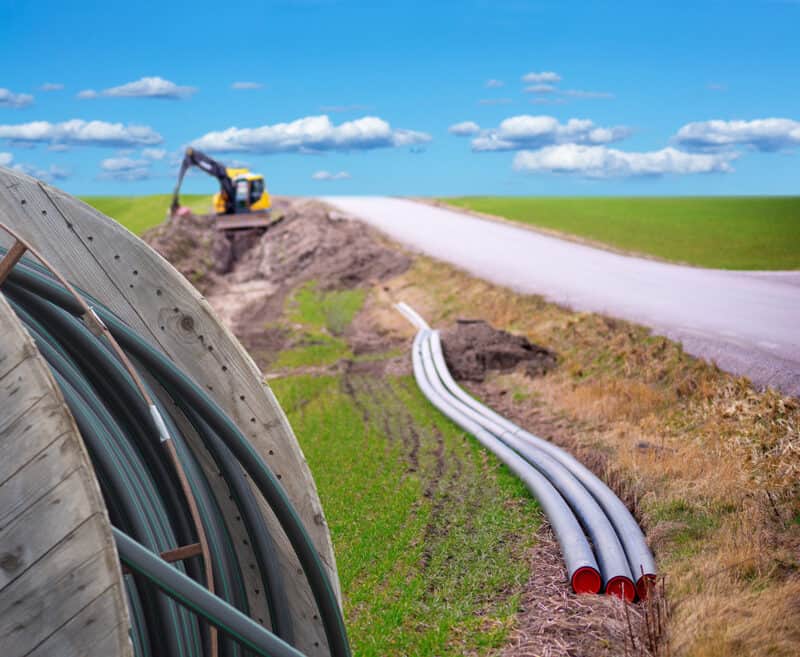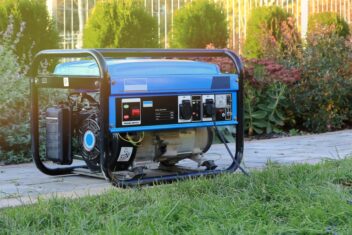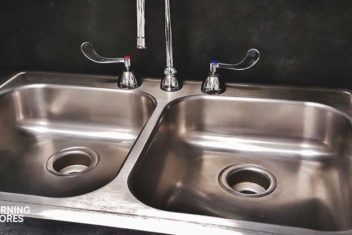Living in the countryside has advantages, like waking up to the peaceful sound of nature, a slower pace of life, and getting to spend more time doing the things you love, like gardening. Living rurally doesn’t let you completely escape from the modern world, even if wish it was that simple. Even those living rural need internet, for instance.
Getting fast internet in remote areas can be a real challenge. Whether you’re moving to the country or need a better connection for all those Zoom calls, this article has some useful advice for internet options in your rural home.
Why Is Broadband So Slow in the Countryside?

Nowadays, if you have opted for living in the countryside, you might be working remotely online, or you might simply want to benefit from online streaming services so you can enjoy higher resolution movies. Maybe you’ve experienced problems when texting a friend or trying to look up a recipe online.
We can’t live without the internet, these days, even if we live rural.
But first, let’s clarify our terms. ADSL broadband (or DSL) refers to when the signal is sent via existing copper phone lines. Fiber optic internet, or just “fiber,” are glass or plastic cables that transmit signal. Satellite internet is a signal sent from satellites orbiting Earth, and cable internet is fed through cable wiring (the kind that you get TV through).
WiFi is a wireless signal, while broadband refers to data transmission involving multiple signals (rather than just one), which increases speed.
The reasons why the connection is so slow in rural areas comes down to a few reasons:
Lack of Infrastructure
In most areas that are highly populated, there is a robust copper network already in place, so you get a fast connection. Many urban areas have also invested in fiber systems. However, in more remote areas, it’s too expensive to run the equipment out to the sparsely populated areas with lots of distance to cover.
As a result, the internet speed can be as low as 1Mbps (megabits per second), which can make it extremely difficult to download or upload information.
Worn Out Equipment
Even though broadband speed has become more efficient over the last few years, copper wiring is still used to connect your home to the electric cabinet (an outside electrical box) in many places. This means it can become worn out and you might lose internet connection unexpectedly, as the weather can be more extreme in rural areas.
Poor Signal
Most people also use their phone for Wi-Fi as well as their laptops or PCs, but both devices can suffer from a poor internet connection in rural homes. Your mobile phone often receives weak signals in the countryside, however, it can also enable faster connection compared to basic broadband. You just need the right broadband, which all depends on the area you live in.
Broadband Options for Rural Homes
Now you might be wondering, should I upgrade from DSL to fiber? Will it give me better speed? What are the other options if fiber isn’t available?
To answer all those questions, here’s a list with all the rural internet options so you can decide for yourself which is best for your situation.
Fiber Broadband

This is the most popular option for people looking for a speedy WiFi connection. Instead of the traditional copper wire, fiber broadband uses a high-speed fiber optic cable that connects your nearby cabinet to the signal and therefore gives you faster speed.
The problem is that many areas don’t have fiber infrastructure in place. While some communities join together to help cover the costs of bringing fiber in, not everyone can afford that.
Plus, the last part of the connection, the area from the street to your home, is your responsibility. You will likely need to cover the cost of bringing the fiber to your house. On top of that, unless you pay an additional cost to bring fiber from the exterior box to the inside of your home, you will still be connected by a copper wire from the electrical box to your connection outlet. That means slower speeds when the signal is filtered into the copper wire.
However, if you really need a fast connection and you are willing to pay for it, fiber is your best option.
Mobile Broadband

You can gain rural internet access through your cell provider with 3G/4G/5G. Isn’t the modern world marvelous? To use this option, you can either connect a dongle to your computer, use your phone’s WiFi hotspot, or invest in a dedicated mobile router.
Your phone’s hotspot isn’t the best option if you want to connect a lot of devices like smart appliances, lights, and multiple televisions or computers. However, it can work well for just one computer or tablet. Keep in mind that many cell providers will slow down your connection after you’ve used a certain amount of data.
On the other hand, you can pay for a dedicated router through your cell provider, and then you can use multiple devices. Right now, not every cell provider offers this option, but the choice of mobile broadband is becoming more common for rural homes as it provides more advanced connections and speed.
Instead of going directly through your cell provider, there are a few small companies out there who buy service from cell providers in bulk so there are fewer data limits. You can then purchase service and rent (or buy) a router through these companies.
The pro of this method is that signal is generally more reliable than satellite and faster than DSL. The downside, beyond data limits, is that it is expensive and you can’t use your own equipment.
Satellite Broadband
Satellite broadband has existed for a long time, and it remains a good choice for rural home internet users. However, satellites can also be less reliable as weather conditions make the connection less clear. If you cannot find another solution, it is still a useful option for connecting your home to the internet.
Typically, you will need to rent or buy a satellite dish to receive the signal and this option can be noticeably slower than fiber. But you don’t have to worry about aging copper wiring or the cost of running fiber to your home.
Bonded Broadband
A great way to improve the broadband speed in your home is to double your connection. Meaning, install two lines to your home and that will increase the chance of receiving a good signal. Not all providers offer this service but it’s worth checking.
Fixed Wireless Broadband
If you live near a village or small town, you may be able to access a wireless transmitter. Although not all rural areas have this, it’s a good internet option for rural areas that are willing to or have made the investment. It involves installing a main receiver somewhere central, which beams a signal to nearby subscribers.
The downside is that if a company hasn’t already opted to install a receiver, it would likely need to be a community investment. But it might be worth asking around in case it already exists! The other drawback is that you need to be within the line of sight of the receiver and weather can impact your signal.
Community Broadband (FTTH)
If you are fortunate enough to live in a close-knit community, then this option might be a lifesaver. It is possible for a small town to install its own broadband network. For example, B4RN is an FTTH that provides communal WiFi. You can ask your neighbors to see if one exists, or if they would be interested in setting it up.
Provider Options

These are a few options available for broadband connections in rural homes. You might want to reach out to some providers to get some information about their prices, services, and speed.
For satellite, Dish, Viasat, HughesNet, are all available across most of the US. Starlink is ramping up its service but is still in the early phases so it isn’t widely available.
EarthLink, AT&T, T-Mobile, Verizon provide cellular internet, with companies like Nomad, Unlimitedville, and Boomfi provide high-speed internet through whichever cellular provider has the strongest signal in your area.
Fixed broadband providers include Rise Broadband, which receives consistently good reviews from experts and users.
Lumen (formerly CenturyLink), Kinetic by Windstream, and Frontier provide fiber to many rural areas.
Suddenlink Communications and Mediacom provide cable internet to many areas where larger providers such as Comcast don’t.
Mobile Broadband Options
Whether you are traveling, RVing, want a backup for your home system, or intend to rely on them full-time, there are multiple options for people looking to take their internet with them without using the traditional set-up. If you need to travel with WiFi in your vehicle, be sure to invest in a good power inverter.
Dongles
Dongles look like USB sticks, but they allow your phone’s cellular connection to power your internet signal on your laptop or PC. They’re perfect for rural homes because you can get instant access, and they allow you to travel with WiFi, which is a nice added bonus.
Mobile Hotspot/Tethering
This converts your mobile phone into a broadband router for a short amount of time. It’s a good backup if your existing WiFi ever stops working, or as a long-term solution to your slow connection issues.
MiFi devices
A MiFi acts as a mini router that plugs into your laptop or PC. It gives a signal to those close to it and is battery-powered. All you need to do is charge it with a USB cable to your device.
The difference between this and a dongle is that multiple devices can connect to MiFi.
Public WiFi
If all else fails, this is your emergency solution to a sudden internet shortage. You can always go for a coffee and use the public internet at a cafe. It is not the ideal plan for long-term use, but it’s good to have a plan B just in case!
Providers
Mobile broadband is definitely a good option if you live rurally and need an internet connection in a pinch. Plus, it is simple to set up and you can have access on your phone whenever you need it!
These are some providers (beyond the usual cell providers) that offer mobile broadband services:
- Three Home Broadband
- EE
- Vodafone
- O2
Providers vary depending on where you live in the world. Regardless, it’s fairly common nowadays, so it shouldn’t be difficult to find!
Tips to Help You Pick the Right Broadband
After considering all the options, the next step is picking the right broadband for your home. Before you make your decision, there are a few things to bear in mind when contacting providers. For instance, research on price comparison websites to ensure you get good value for money. There are lots of competitors in the broadband business, which is why it is important to find the best deal for your home.
Also, some providers require a long contract timeline, that can last up to two years. If you are permanently staying in an area then this might work for you. However, if you are temporarily living somewhere, or don’t want to commit for that length of time, double-check the minimum terms before signing up to anything.
Finally, try to do as much research as possible on what you need. For example, the speed, the type (fiber, mobile, etc.), and consider your daily needs. You might want to watch movies at night, or your child might play a lot of video games. Just be sure to write down everything you need and then you can ask your provider what they can offer you.












